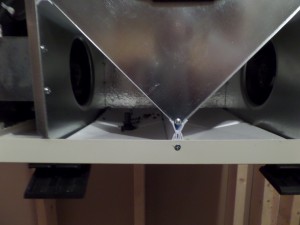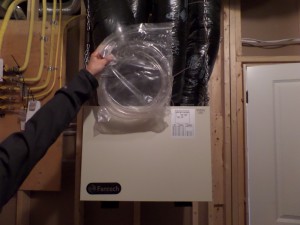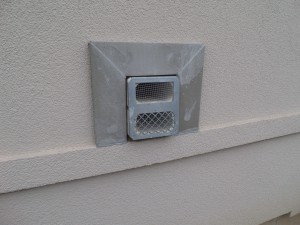Improper HRV Installations
Recently I conducted an Inspection of a House that was just under a year old. The owners requested the Inspection because they could not understand why there was condensation on their windows during the winter months, especially since the house was equipped with an Heat Recovery Ventilator (HRV). An HRV is installed to continually circulate fresh air into a home while simultaneously exhausting old air from the house and maintaining a preset humidity. To my surprise the HRV installer never connected a condensate drain to the HRV, resulting in the heat exchanger creating moisture between the hot and cold air with nowhere to drain to, thereby redistributing that moisture throughout the house, creating condensation on all of the homes windows.
The Photograph above actually shows the drainage nipple inverted towards the inside of the HRV, basically the installation was never completed, and the owner was allowed to move in believing that everything had been completed and inspected.
The Photograph below shows the owner holding up the condensate drain, still in it’s original packaging found on top of the HRV.
To Make matters even worse than they already were, please note the location of the HRV air intake and exhaust vent locations in the photograph below. The fresh air intake and stale air exhaust pipes are located one on top of the other. The Building Code states that there must be a minimum horizontal distance separation of 3 feet or 900mm, basically what this HRV was doing was it taking in it’s own exhaust, it’s no wonder why this house had window condensation issues. I wonder how this inspection passed?
The Building Code also states that the fresh air and exhaust ducts must be constructed to protect against the elements.



